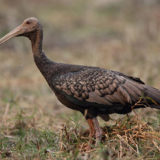Giant longhorn beetle
Giant longhorn beetle
English name: Giant longhorn beetle
Scientific name: Enoplocerus armillatus
Habitat: The beetle lives in dry and wet areas
Distribution: Found in most countries of South America.
Description:
The giant longhorn beetle is a species of beetle. It is one of the largest beetles with the adult male measuring 110-120 mm while the female can reach a length of 70-80 mm. It has a black body with pale brown reinforced first pair of wings like most other beetles that protects the second pair of wings and abdomen. The male has large mandibles and very long, black antennae. The legs are black and thin. Each thorax has four spines.
Habit and Habitat:
It is diurnal and feeds on fruits and tree exudates. The larvae are root borers, feeding on decaying materials.
Importance:
Like all beetles, it is also a key component in the workings of the biosphere by playing an important role as nutrient recyclers returning organic matter through multitrophic interactions, which contribute to soil fertility.











